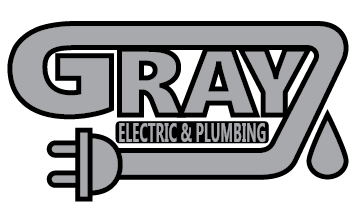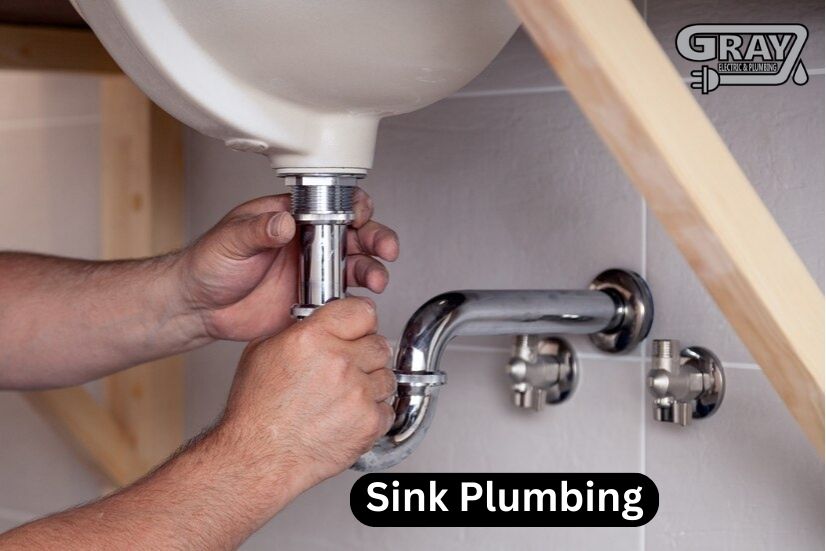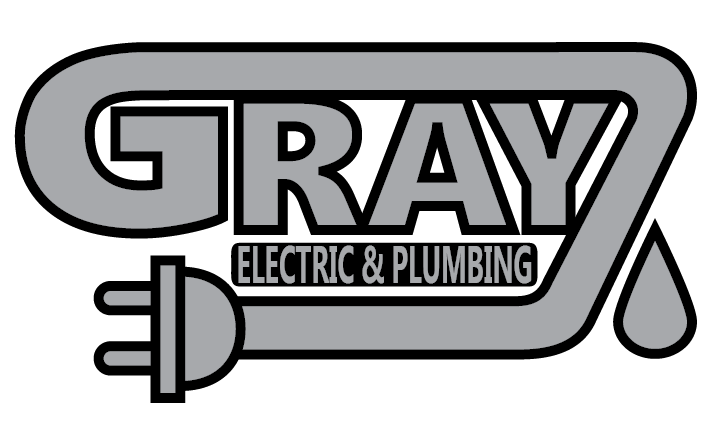Have you ever wondered how the sink in your kitchen or bathroom works? You turn on the faucet, and water flows in. When you’re done, the water goes away down the drain. But what’s going on behind the scenes? Sink plumbing makes all this happen, and knowing how it works can help you take better care of it.
This guide will explain sink plumbing in simple words. You’ll learn how your sink plumbing works, what can go wrong, and how to keep it in great shape. Let’s get started!
What Is Sink Plumbing?
Sink plumbing is the system that brings water to your sink and removes it when you’re done. Every sink has pipes and other parts that help it work. These pipes are connected to your house’s plumbing system.
Water comes through pipes and enters your sink through the faucet. Once you use the water, it goes through the drain and into the pipes below. From there, it flows out of your home or into a sewer system.
This plumbing system includes several main parts: pipes, faucets, drains, and the P-trap. Let’s examine these parts to see how they work together.
The Key Parts of Sink Plumbing
- Pipes: These tubes carry water to and from your sink. Most pipes are made from materials like PVC, copper, or steel. They are strong and can have water for long distances.
- Faucet: The faucet is where you turn the water on and off. It connects to the water pipes. When you twist the handle, water flows from the faucet into your sink.
- Drain: The drain is where the water goes once you are finished using it. It leads to the pipes under your sink.
- P-trap: This is a curved pipe under the sink. It holds a small amount of water to stop bad smells from coming through the drain. The P-trap is essential for keeping your home smelling fresh.
These parts work together to bring water into your sink and remove dirty water. But like anything else in your home, sink plumbing can have problems over time.
Common Sink Plumbing Problems
Sink plumbing has a few common problems. Understanding these problems can help you determine what to do when something goes wrong.
1. Clogged Drains
Clogs happen when something gets stuck in the pipes. This can be caused by food scraps, grease, hair, or soap. When the drain is clogged, water can’t flow easily, and the sink might fill up with water or drain slowly.
What to do: You can try to clear the clog yourself with a plunger or a drain cleaner. If that doesn’t work, you may need a plumber’s help.
2. Leaks
Leaks occur when water escapes from pipes. This can happen at the joints where the pipes are connected or from cracks in the pipes. If left unfixed, leaks can cause water damage in your home.
What to do: If you notice a leak, turn off the water supply to the sink and call a plumber. The plumber can find the source of the leak and fix it.
3. Low Water Pressure
Low water pressure means that the water coming from the faucet is not flowing as strongly as it should. This can happen because of debris or dirt in the pipes or faucets.
What to do: You can clean the aerator (the small part at the end of the faucet) to remove any dirt. If that doesn’t work, there might be a bigger problem, and you should contact a plumber.
4. Smelly Drains
Sometimes, sinks smell bad. This is usually because food or grease has built up in the pipes, and the smell can come back through the drain.
What to do: Pouring baking soda and vinegar down the drain can help eliminate bad smells. If the smell persists, a plumber can clean the pipes for you.
How to Keep Your Sink Plumbing in Good Shape
Just like anything in your home, it’s important to take care of your sink plumbing. By doing a few simple things, you can prevent problems from happening in the first place. Here are some tips to help you take care of your sink plumbing.
1. Don’t Put Grease or Food Down the Drain
One of the biggest causes of clogs is putting grease or food scraps down the drain. When grease cools, it hardens and can block the pipes. Food scraps can also get stuck and cause a clog.
What to do: Always throw food scraps in the trash, not down the drain. Pour grease into a container and throw it away.
2. Clean the Drain Regularly
Cleaning your drain regularly can help prevent clogs and bad smells. You can use a drain cleaner or a simple baking soda and vinegar mixture to keep things fresh.
What to do: Pour baking soda and vinegar into the drain, let it sit for a few minutes, and then run hot water through it. This helps keep things clear.
3. Use a Drain Cover
Using a drain cover is a simple way to catch food scraps and hair before they go down the drain. This helps prevent clogs and keeps the pipes clear.
What to do: Buy a drain cover and place it over the drain. Make sure to clean it regularly.
4. Check for Leaks
Leaks can occur in your sink plumbing, and it’s important to catch them early. Check under the sink for any signs of water or dampness.
What to do: Call a plumber to fix the leak if you see water under the sink or hear dripping.
5. Call a Plumber When Needed
Some sink plumbing problems are too big to fix on your own. If you have a big clog, a leak, or other plumbing issues, it’s best to call a plumber. A professional plumber can fix the problem quickly and prevent further damage to your home.
When to Call a Plumber
Not all plumbing problems are easy to fix by yourself. Some issues, like significant leaks or big clogs, can cause much damage if not fixed immediately. In these cases, it’s a good idea to call a plumber.
Plumbers have the tools and experience needed to fix plumbing problems quickly. They can also spot issues you may not even notice, like worn-out pipes or problems with water pressure. It’s best to get expert help if you’re ever in doubt.
Frequently Asked Questions (FAQs) About Sink Plumbing
1. What causes a sink to clog?
Clogs can happen when food, grease, hair, or soap build up in the pipes. These materials block the flow of water, causing slow drainage or a full blockage.
2. How can I prevent my sink from smelling?
To prevent bad smells, avoid putting food or grease down the drain. Regularly clean the drain with baking soda and vinegar to keep things fresh.
3. What is a P-trap in sink plumbing?
A P-trap is a curved pipe under the sink that holds water to stop odors from coming back up the drain. It’s an essential part of sink plumbing.
4. How do I fix a leaking sink pipe?
If you notice a leak, turn off the water supply and call a plumber. They can identify the source of the leak and fix it properly.
5. How can I improve the low water pressure in my sink?
Low water pressure can often be caused by a dirty faucet aerator. Try cleaning it or checking for blockages in the pipes. If the issue persists, call a plumber.
6. How often should I clean my sink drain?
It’s a good idea to clean your sink drain every few months. Using baking soda and vinegar can help prevent clogs and keep the drain fresh.
7. When should I call a plumber for sink plumbing issues?
Call a plumber if you have major leaks, persistent clogs, or low water pressure that you can’t fix on your own. A professional can prevent further damage and fix the issue safely.
Conclusion
Sink plumbing is an essential part of your home that helps bring water in and carry waste away. By understanding how it works and taking simple steps to maintain it, you can keep your sink plumbing in excellent condition for years.
Don’t put grease or food scraps down; clean your drain regularly, and call a plumber if you have any significant problems. Taking care of your sink plumbing today can save you from more critical issues in the future.
Contact us today if you need help with your sink plumbing or have any questions. Our team of experts is here to ensure everything runs smoothly in your home!


